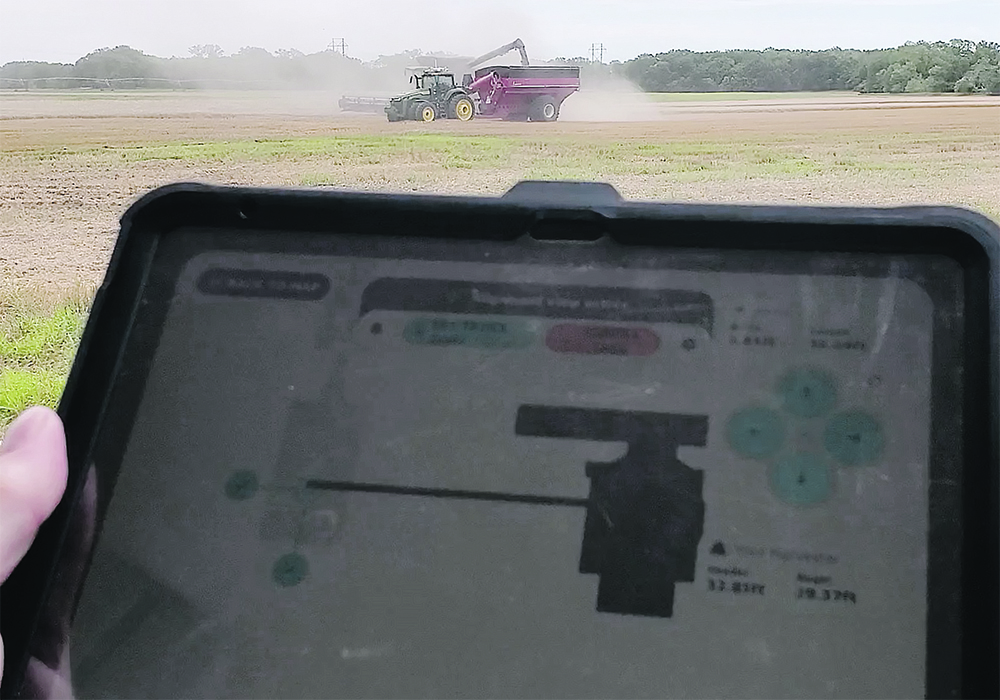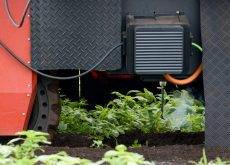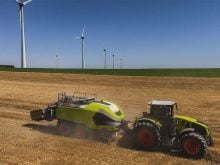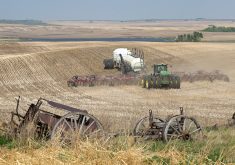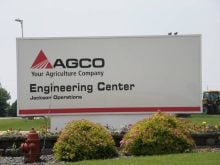Agco looks to dominate the precision farming landscape and to deliver products to producers in a new way
Speaking to a group of ag and investment journalists in late June, Agco chief executive officer Eric Hansotia said his aim is to take Agco to a dominant market position when it comes to precision farming offerings.
The decision to pursue that goal was made in a meeting of senior management several months ago, he added. Now the company is pulling out all the stops to move from the back of the pack to the front.
“We want to be the industry leader for smart farming solutions. We want to be the best. So we compiled all the things needed to become the best. We increased our engineering budget by 60 per cent since then. Those engineers have doubled our portfolio. We bought six tech companies. We made the biggest ag tech deal in the history of the industry in creating the JV (joint venture) with Trimble. All of that contributes to one North Star: becoming the industry leader in smart farming solutions and autonomy.”
Read Also

Phosphate prices to remain high
Phosphate prices are expected to remain elevated, according to Mosaic’s president.
Unlike other original equipment manufacturers, Agco intends to reach that goal with a “retrofit first” strategy, aiming to supply farmers with technology that will work across all brands, not just on its own machines.
“We’re going to be the mixed fleet data platform that’s better than anybody else,” he said.
Hansotia believes retrofit is the most cost efficient way for producers to adopt new technologies, and it could also be the most profitable way for the brand to introduce it because it’s the least vulnerable to market downturns.
“Retrofit has never had a down year. In the 25 or 30 years Precision Planting has been in existence, it’s always grown.
“In a good market, you could say, ‘I’m making so much money, I’m not pushed to raise production.’ Right now, the margins are razor thin for farmers, so they have a choice. If I’ve got to get more efficient with my planter, maybe I’ll do it for $150,000 instead of $500,000. So retrofit keeps going.”
One of the next technologies to come from the brand is Outrun, a retrofit autonomy kit that will allow late model 8R John Deere tractors and select models of Agco’s Fendt brand to pull a grain cart. It will be expanded to include tillage applications shortly after that initial release and then eventually move on to include other machines and field tasks.
How buyers will pay for it will change from how machinery has been traditionally sold. There’ll be an initial purchase cost and then a subscription fee to keep it running.
Hansotia said farmers aren’t exactly thrilled with the concept of subscription-based equipment sales, but he thinks it offers an advantage for high-end technologies such as autonomy.
“Farmers in general still don’t like recurring revenue. Farmers will tell you they would much rather, in most cases, when times are good, they’d like to buy it, finance it and have it all handled. And then when times are a little tougher, they want to minimize their costs. They don’t like these costs every year. For machinery, that’s still the case.
“When you get into autonomy, features are going to be changing fast all the time. So if you get into a subscription, you’re just always going to get the latest features. So it could be that autonomy is one that’s viewed differently. That’s how we’re looking at it. So in certain areas there’s a receptivity. If it’s just a regular machine, we think customers are still going to (prefer outright purchase).”
How the company delivers equipment, technology and support services to farmers is also evolving. Early this year, Agco announced its FarmerCore program, which aims to reshape dealerships, moving from traditional fixed dealership locations to a more mobile on-farm delivery.
The company has helped dealers move toward implementing the concept, such as an organized group buying on service trucks.
“Farmer Core is flipping the model 180 degrees,” Hansotia said.
“Instead of having the customer come to the business, the business comes to the customer. This wouldn’t have been possible 20 years ago. Now we have the digital tools, connected machines, people comfortable with online shopping and consuming information directly.
“We’ve turned it on for all of North and South America. We had Canada and U.S. dealers in a dealer meeting in January for three days. And we walked them through all the specifics of what we’re trying to achieve, what the tools are, what they need to do, what the outcomes are for the farmer, all that kind of thing. So we’re expecting it to happen in all the Canadian dealers.
“The feedback we’ve gotten so far is not only do the customers like it, but the dealers like it, because it’s a much more flexible way for them to grow with these trucks instead of having to put up bricks and mortar.”


